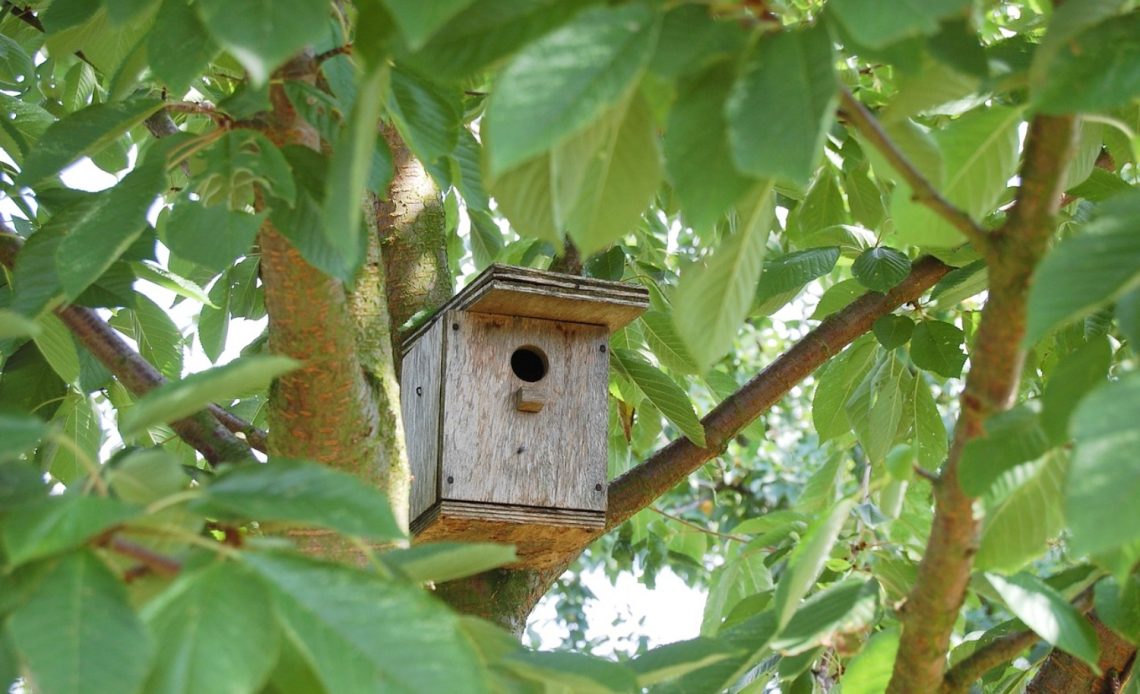

We’re here to help! Wild Yards is a completely free website that is 100% dedicated to helping you create a wildlife-friendly, sustainable yard. Read more
WildYards is reader-supported. When you buy a product through a link on our site, we may earn a comission. Every product is independently selected by our (obsessive) editors and our reviews are unbiased and objective. Read more about our mission or our privacy policy.
The hummingbirds that visit your backyard throughout the year won’t build their nests in traditional birdhouses. They’re just too big for them to feel safe in. But, you can purchase houses built specifically for hummingbirds to give them a place to nest and raise their young. Installing hummingbird houses on your property is a great way to support wildlife. But you may be wondering where to hang a hummingbird house so the hummingbirds will actually see it and use it.
When hanging up a hummingbird house, choose a location that is out of the weather, so the nest won’t get blown around in the wind. Under the eave of your porch or garage, or another secluded structure, will work best.
Where to install a hummingbird house in your backyard
Hummingbird houses are much smaller than traditional birdhouses, the perfect size for these tiny fliers. But hummingbird houses also make good homes for other small birds, including wrens, sparrows, and chickadees.
For best results, you should install your hummingbird house in close proximity to a feeder. It takes hummingbirds 4 to 5 days to construct their nests, so keeping their houses near a feeder will ensure they have ready access to a meal.
Of course, you don’t want to place the house right next to a feeder. All the traffic to and from it may discourage female hummingbirds from nesting nearby. So, for best results, install the house 10 to 20 feet away from a feeder.
Place the hummingbird house under the eave of your porch, garage, or other structure. Place the house right up against a wall of the structure to prevent it from being blown around. Hummingbirds won’t nest in the house if it shifts in the wind too much.
These jute hummingbird houses work well. They’re insulated enough to provide protection from the elements, yet also quite breathable, allowing for good air circulation around the nest to prevent bacteria, so the hummingbirds don’t get sick.
Remember to install a nesting material holder nearby, too. Hummingbirds build their nests out of fine, delicate materials, like spider webs, moss, and cotton fibers. Giving them easy access to these supplies will encourage them to build nests nearby.
A few nesting material holders situated in your pollinator garden and/or near your feeders will provide your hummingbirds with all of the things they need to get their nests ready for their eggs.
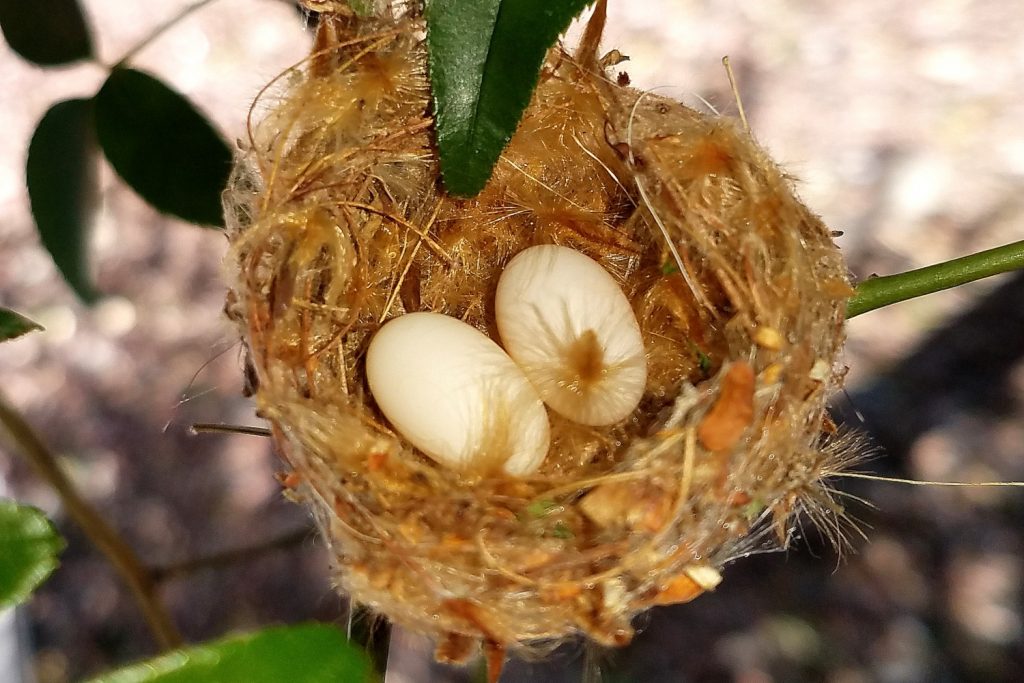
Where to place hummingbird nesting clips in your garden
Hummingbirds can be finicky. Some hummingbirds are more likely to use hummingbird houses than others. It all depends on what the hummingbird in question feels is the safest option for her babies.
If you’ve installed a hummingbird house and found that hummingbirds simply don’t want to set up shop in it, or if you want to provide your local hummingbirds with as many nesting options as possible, consider installing hummingbird nesting clips as well.
These small cup-shaped clips provide the perfect foundation for a hummingbird nest. The clips easily attach to branches, and can be placed in shrubs and low-growing tree boughs in your backyard.
We recommend placing 3 to 5 hummingbird nesting clips in the eco-friendly plants in your pollinator garden. Placing the clips among hummingbird-favorite flowers will make them easier for the birds to find.
Often, hummingbirds that are reluctant to nest in houses will be more than happy to build their nests in these clips, instead.
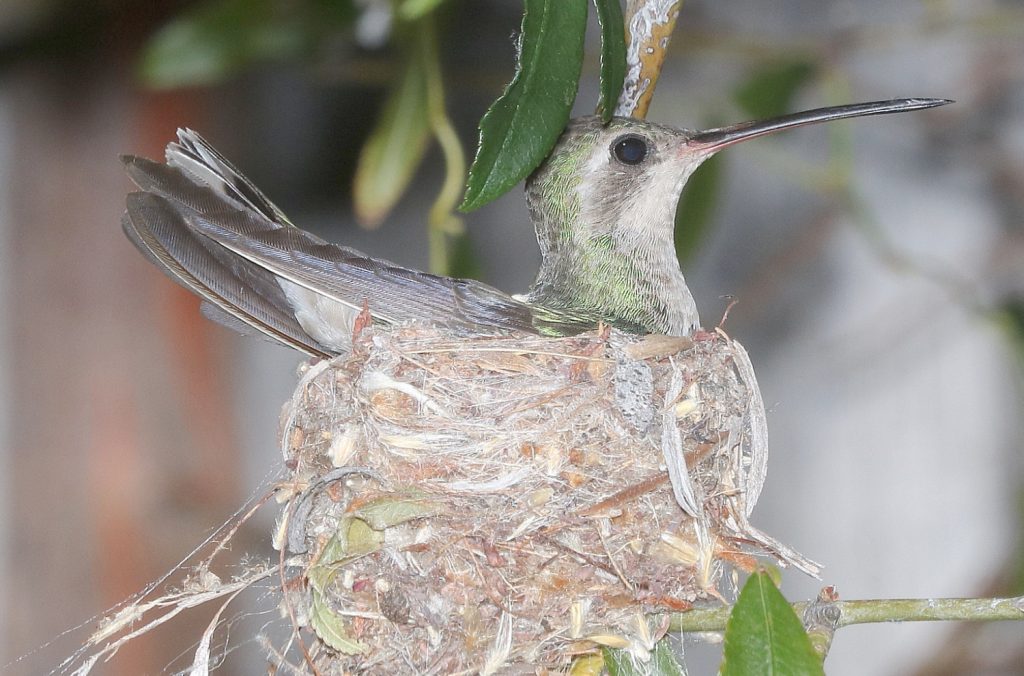
Hummingbirds can be territorial
If you’ve ever watched hummingbirds for any length of time, you know just how territorial they can be! Hummingbirds will chase each other away from feeders, and even steal from each other’s nests.
So to prevent your flock of hummingbirds from coming to blows, we recommend installing only one feeder.
If you have a large backyard we’re talking an acre or more of land, then you can hang up two feeders. Just be sure to space them as far apart as possible. This will help female hummingbirds feel much more safe, and make them more inclined to nest in your garden.
While you should only install a couple of houses at the most, it’s okay to set up multiple nesting clips.
Hummingbirds will choose the clips they feel are most appropriate, and other hummingbirds will avoid building their nests nearby.
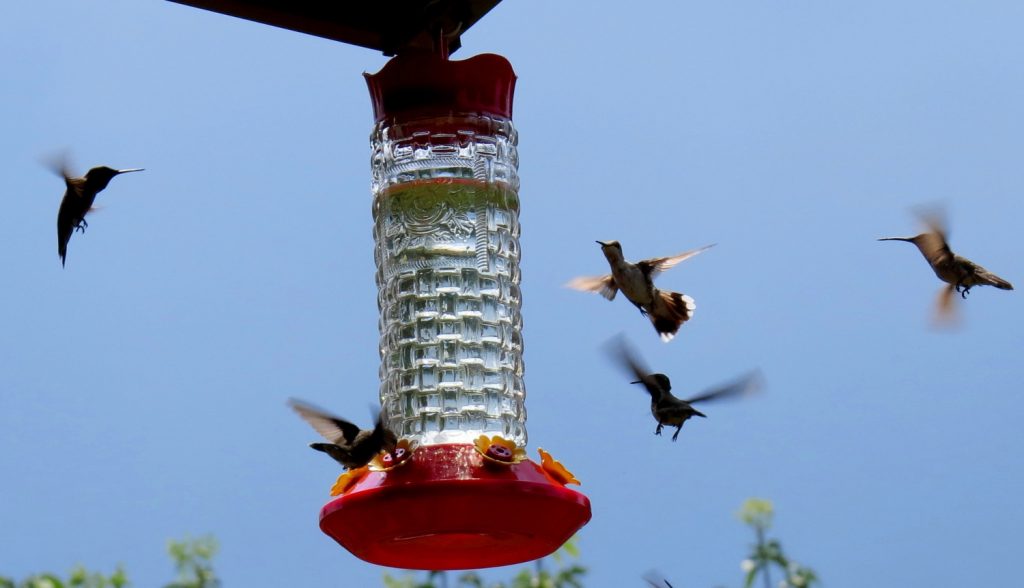
Keep predators at bay
If you have outdoor cats, bring them inside during hummingbird season in your state. Hanging up feeders and installing hummingbird houses when you have cats outside isn’t very fair.
Likewise, you should ensure that there are no wasp or hornet nests near your feeders and hummingbird houses. Wasps and hornets can be extremely aggressive, and their presence may dissuade hummingbirds from nesting nearby.
Keep an eye out for praying mantises and spiders, as well. These large insects will prey on hummingbirds if given a chance. However, they are excellent for pest control, since they feed on aphids, mites, and thrips.
So, rather than kill them, simply move these insects to other parts of your garden where they won’t pose a threat to your hummingbirds.
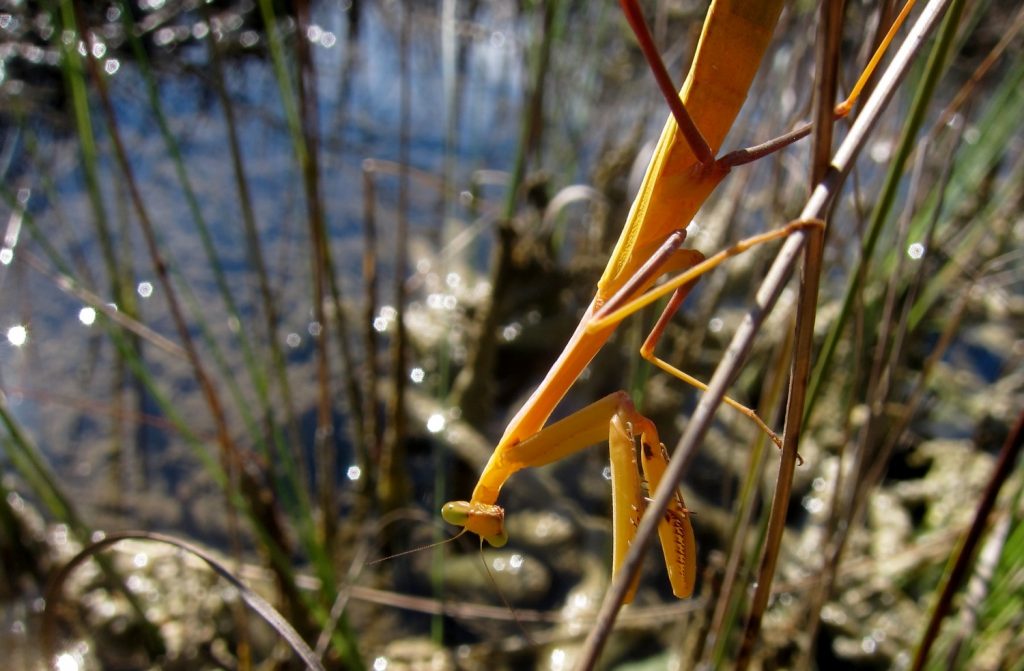
Remove nests at the end of the season
Hummingbirds generally prefer not to come back to the same nests. The nests themselves are so fragile that they often don’t survive from one season to another, anyway.
So after a female hummingbird has finished laying her eggs and rearing her young in your hummingbird house or nesting clip, be sure to remove the nests. This will free up the space so other hummingbirds can construct new nests later on.
Remember to add more nesting materials to your holders each season to ensure hummingbirds have enough stuff to build with.
Hummingbirds have excellent spatial memory and can track down hummingbird feeders year after year. They often return to the same paces during their migration, preferring backyards that feel familiar.
To make sure your hummingbirds don’t have any trouble relocating things, be sure to keep their houses, nesting clips, and building material holders in the same locations every year.
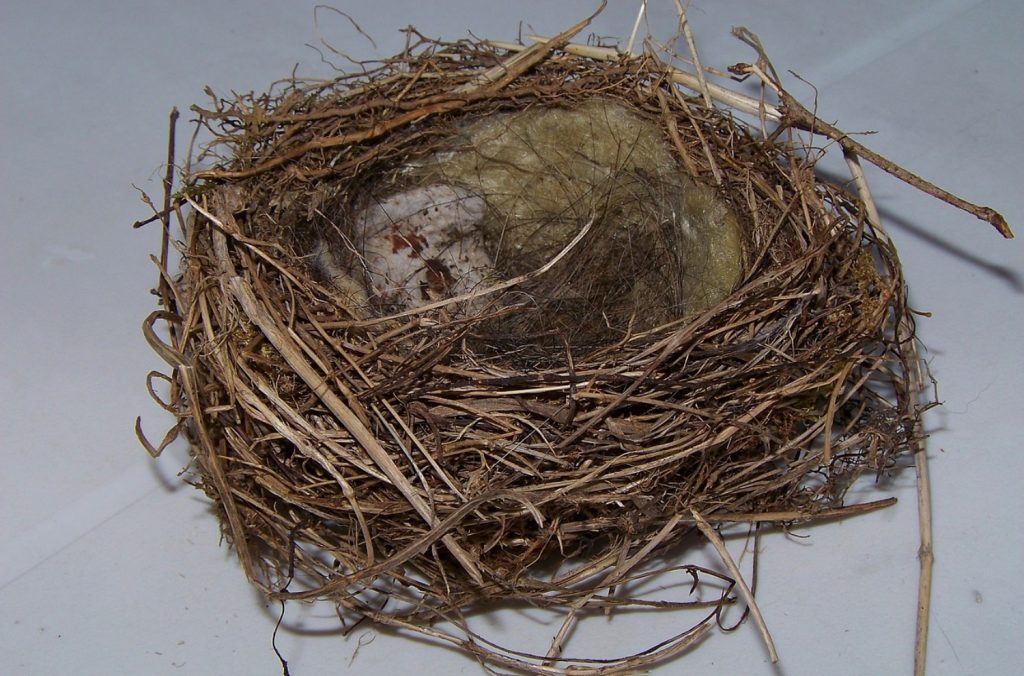
How to attract nesting hummingbirds to your backyard
Hybrid flowers are attractive. They can bloom over and over again, providing your home with curb appeal. But in terms of nutrition, these flowers are a poor choice for hummingbirds.
An easy way to encourage hummingbirds to build their nests in your yard is simply to plant more nectar-rich native flowers!
Petunias, morning glories, begonias, and wisteria are always popular with hummingbirds. But, hibiscus, lantana, and bee balm are also good choices. Don’t forget to include open-faced blooms, like cone flowers, coreopsis, and other flowers that look like daisies.
Remember to include native grasses in your pollinator garden, to provide hummingbirds with additional nesting materials. Native grasses also provide a habitat for toads and lizards, which will help control pest levels in your garden.
Use this native plant locater to choose the best flowers for your ecoregion.
Plant flowers of different shapes, sizes, colors, and heights to attract hummingbirds. Hummingbirds are most attracted to shades of red, pink, orange, and yellow. But be sure to include white, blue, violet, and purple flowers, as well, to attract other beneficial pollinators, including bees and butterflies.
Install several hummingbird feeders throughout your pollinator garden so hummingbirds have lots of food options to choose from. Place a bird bath equipped with a solar-powered fountain in your backyard as well. Hummingbirds love to wash off in warm weather!
Supporting your local hummingbirds is easy!
Growing a pollinator garden, installing a few feeders, a bird bath, and a hummingbird house will ensure your local hummingbirds feel right at home in your backyard. And the safer they feel in your outdoor space, the more likely they’ll be to return to it, keeping you and your family entertained with their flying antics season after season.
